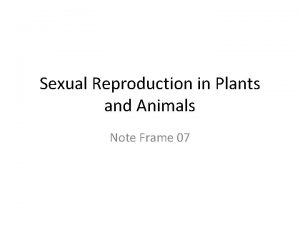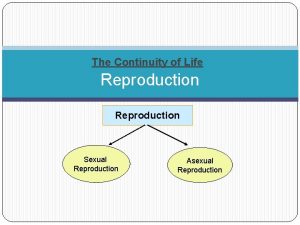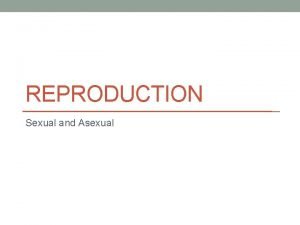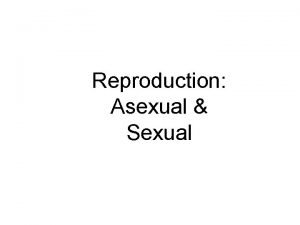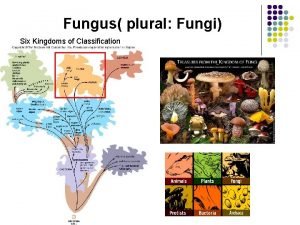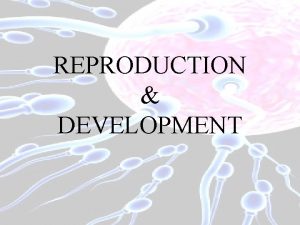SEXUAL VS ASEXUAL REPRODUCTIONS ASEXUAL REPRODUCTION Asexual reproduction










- Slides: 10

SEXUAL VS. ASEXUAL REPRODUCTIONS

ASEXUAL REPRODUCTION Asexual reproduction is reproduction without sex, by which an organism reproduces through MITOSIS. Mitosis is a form of cell replication that makes EXACT copies of the parent cell. So in asexual reproduction the offspring are IDENTICAL COPIES to the parent in every single way. (clones)

WHAT DOES ASEXUAL REPRODUCTION ? This type of reproduction is common among some single-cell organisms, amoebas, bacteria, and hydras. Some multicellular organisms that use asexual reproduction are Fungi, Coral, Starfish and lots of plants.

ASEXUAL REPRODUCTION

ASEXUAL REPRODUCTION Binary Fission Budding Binary fission is a method of asexual reproduction. It is common in prokaryotes. A living cell divides into two cells. The two cells should be identical, A new organism develops from an outgrowth or bud due to cell division at one particular site. The new organism remains attached as it grows, separating from the parent organism only when it is mature.

SEXUAL REPRODUCTION Sexual reproduction is a way of reproduction of some animals and plants. Some protists and fungi also reproduce this way. Offspring is made by a cell from the male and a cell of the female.

SEXUAL REPRODUCTION Gametes (Egg and sperm cells) are produced by a process called Meiosis. They only have one set of chromosomes so they are haploid.

The combination of genes from parents and crossing over in Prophase I allows for changes in genes to occur. Offspring are not identical to their parents. When the sperm and egg cell combine they form a zygote that is diploid.

ASEXUAL REPRODUCTION Pros Cons No mate needed. Many No variation in the offspring produced offspring quickly

SEXUAL REPRODUCTION Pro Con Genetic variation in the offspring. Requires both sexes to participate and that takes a lot of time.



